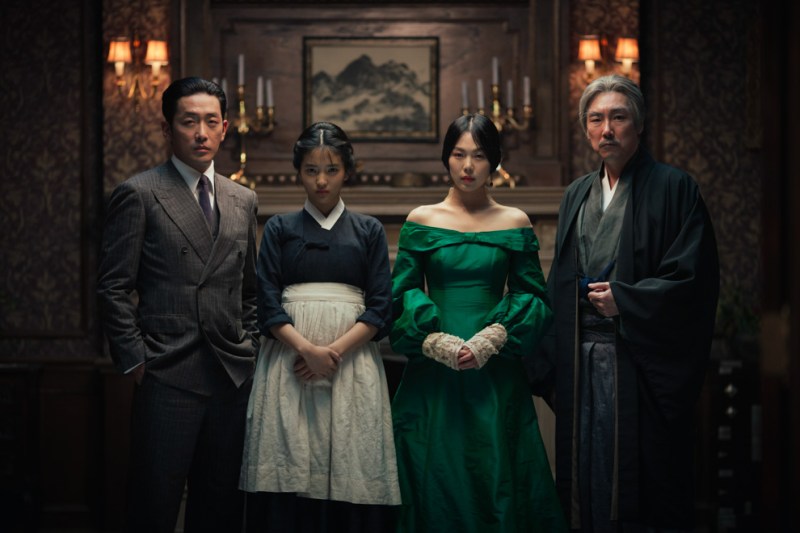Halfway through “The Handmaiden,” I had to ask myself, “What kind of film is this?” Is it a love story? An erotic thriller? A political period piece? Now that I’ve seen it, I can only say that “The Handmaiden” is all of the above.
The latest film from Korean director Park Chan-wook (best known for his bloody revenge thriller “Oldboy”) is a sumptuous clash of influences. Take, for example, the script: An adaptation of Sarah Waters’s novel “Fingersmith,” but with the book’s setting of Victorian England swapped out for Japanese-occupied Korea. This modified background gives the film an undercurrent of cultural tension as characters switch between speaking Japanese and Korean in order to seduce, to clarify or (most frequently) to deceive.
Deception abounds in “The Handmaiden,” which pits its cast in a cat-and-mouse game of lies where no one (especially not the audience) ever knows the full story. Here’s the partial narrative: A shrewd pickpocket named Sook-hee teams up with a con man posing as a Count to rob the delicate Lady Hideko of her fortune. With Sook-hee posing as a handmaiden to Lady Hideko and the counterfeit Count playing her suitor, the duo plan to ingratiate themselves to the Lady before declaring her mentally ill, banishing her to an asylum and claiming her wealth for themselves.
The plan disintegrates quickly, however, when a romance blossoms between Hideko and Sook-hee instead. As the two become more and more intimate, Sook-hee has second thoughts about her plot and begins to quarrel with the Count.
This is only the film’s first 45 minutes, but if I shared any more I’d have to update most of the plot I’ve already laid down. “The Handmaiden” is presented in three labeled acts, each adopting the perspective of a different character to allow hidden truths to come to light. The first act is told from Sook-hee’s point of view, and the second largely retells the same story as seen from Lady Hideko’s eyes. She’s not as naive as she once seemed, nor is Sook-hee’s and the Count’s plan quite as foolproof.
Though I won’t spoil any more of the plot, I must warn the faint of heart: “The Handmaiden” is full of explicit sex, mutilated appendages and a comically large octopus. Your reaction to the previous sentence should give you a good indication of whether you’ll enjoy the film.
Unsurprisingly, the movie’s intensity is its most controversial feature. Its frequent depiction of female sexuality has spawned a good deal of debate, prompting some critics to claim that the film sexualizes its actresses. There is a valid argument to be made here: Any film in which the women undress substantially more than the males has a tenuous claim to a feminist agenda. However, I believe that the net total of the film’s erotic moments is not a reflection of the male gaze, but a subversion of it.
Midway through the story, Lady Hideko is objectified by a group of men — but the scene is more nuanced than it sounds. Park Chan-wook wisely builds up to this moment by showing the harrowing training Hideko is forced to undergo beforehand, making the resulting scene horrifying rather than sexualized. This weaponization of female sexuality for the pleasure of men stands in contrast with the love scenes between the Lady and her handmaiden, which are genuinely tender and offer a reprieve from the rest of the film’s deception.
This romance is the film’s moral core, proving that despite the labyrinth of traps these characters set for each other, some of them are still capable of love. This masterful conflict between duplicity and genuine affection is the film’s strongest point and sets it apart from the average psychological thriller. Provided you can tolerate the intensity of “The Handmaiden,” you will find yourself immersed in the tale of love and lies, from its bombastic start to an ending that is climactic in more ways than you might expect.
Contact Rey Barcelo at rbarcelo ‘at’ stanford.edu.
